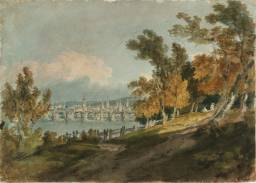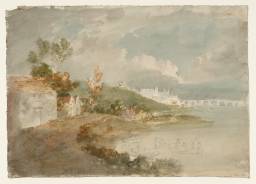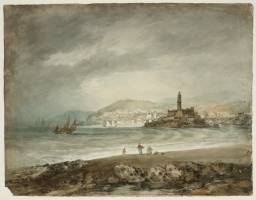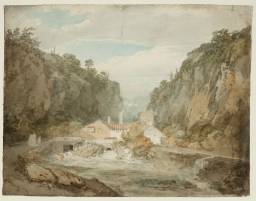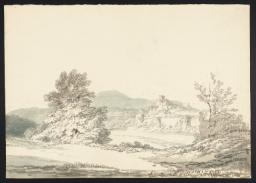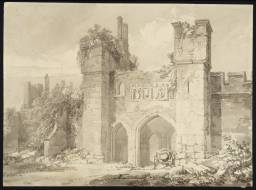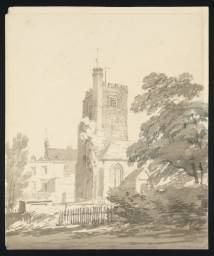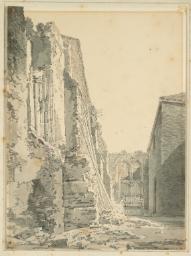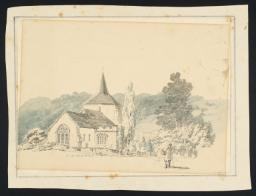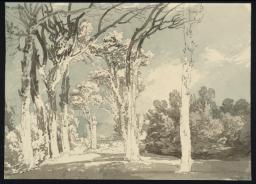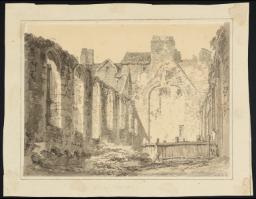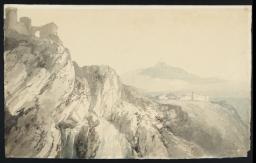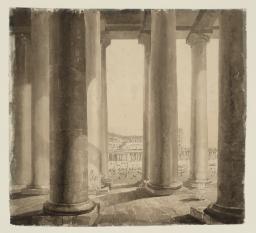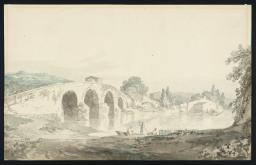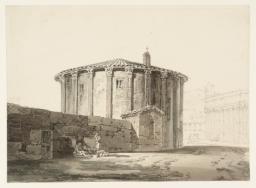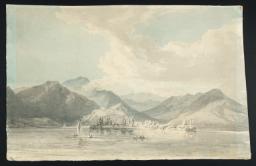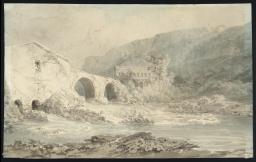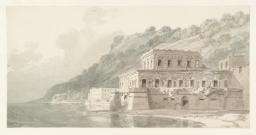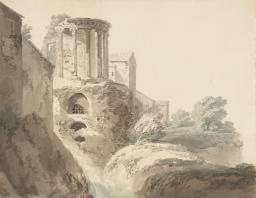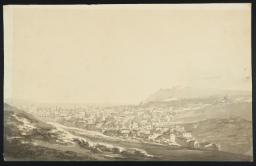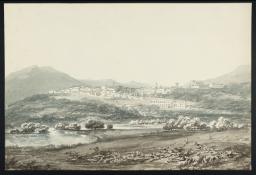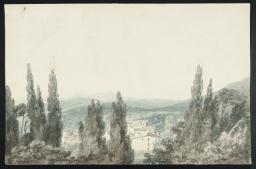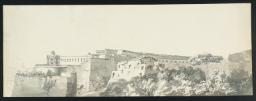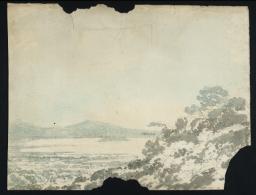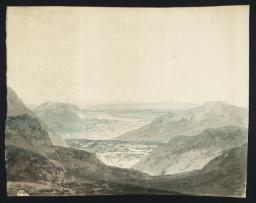Turner Bequest XXVII L, M, XXXIII g, XLIV h, CCCLXXI M, CCCLXXIV 23, CCCLXXV 1–38, CCCLXXVI 1, 2, 4–11, CCCLXXVIII 1–9, CCCLXXIX 4, 21, CCCLXXX 18
References
The drawings in this group were all probably made at the behest of either Dr Thomas Monro (1759–1833; see also the two ‘Monro School’ albums at Tate; Turner Bequest CCCLXXIII, CCCLXXIV) or of John Henderson (1764–1843; see the Dover drawings in this subsection, Tate D36616–D36624; Turner Bequest CCCLXXVIII 1–9). Both were amateur artists and collectors, neighbours in the Adelphi on the bank of the Thames at Charing Cross, London. At Monro’s, Turner worked in collaboration with his contemporary Thomas Girtin (1775–1802), in exchange for ‘half a crown and a plate of oysters’, copying drawings by John Robert Cozens (1752–1797), Edward Dayes (1763–1804) and others, as noted in the artist Joseph Farington’s diary.1 For evidence that Turner knew Monro as early as 1793, see the entry for Tate D36522 (Turner Bequest CCCLXXV 1).
In his diary for 30 December 1794, Farington says that the copies were ‘traced’ and Bell and Girtin2 considered that the word has its modern meaning here, which would account for the crudeness of some of the outlines in relation to the washes laid over them. The sophistication of the watercolour washes varies considerably and must indicate the steady development of Turner’s technique over a period from about 1794–5 to the winter of 1797–8, though there remains the possibility that some of the work was executed by other hands. Henderson seems to have made his own drawings available for copying, but it is possible that in some instances he copied the work of the young professionals. There is good evidence that this is what in fact happened on at least some occasions; when it did not, it is unclear what benefits, if any, he envisaged deriving from the copying process for Turner and Girtin. Henderson’s collection passed to his son, also John, who bequeathed them to the British Museum in 1878. A large number of the drawings made for Monro, which included some apparently made in association with Henderson, were dispersed at the sale of Monro’s effects after his death in 1833, and Turner made a point of acquiring several lots.
The interrelationship between Turner, Girtin and other artists associated with Monro is complex and confusing, especially since in these years there is a stylistic uniformity in all their work that makes it difficult to distinguish the various hands. An interesting example was on the London art market in autumn 2010: a view by Turner, which can be dated on stylistic grounds to about 1794– 5, of the parish church of St Nicholas, Tolleshunt D’Arcy (near Malden in Essex) which exists also in an almost identical version by Girtin (National Galleries of Scotland, Edinburgh, Helen Barlow Bequest). The similarity between the two is due to the fact that they were both copied from a drawing by the antiquarian and amateur artist James Moore (1762–1799), who supplied numerous subjects for engraving and for copying (see examples by Thomas Girtin alone in section CCCLXXVII of the Turner Bequest). Moore seems to have owned both drawings, and is another personality who must be taken into account when considering the so-called ‘Monro School’ work. (A further possible complication lies in the fact that at about this date Turner was beginning to work on commission for George, Viscount Malden, 1757–1837, who was to become 5th Earl of Essex in 1799, and who may have had an interest in places in the Malden area.) The author is grateful to Andrew Clayton-Payne for information relating to these observations.
How to cite
Andrew Wilton, ‘Collaborations with Thomas Girtin for Dr Monro, and Other Copies c.1795–8’, subset, April 2012, in David Blayney Brown (ed.), J.M.W. Turner: Sketchbooks, Drawings and Watercolours, Tate Research Publication, December 2012, https://www

